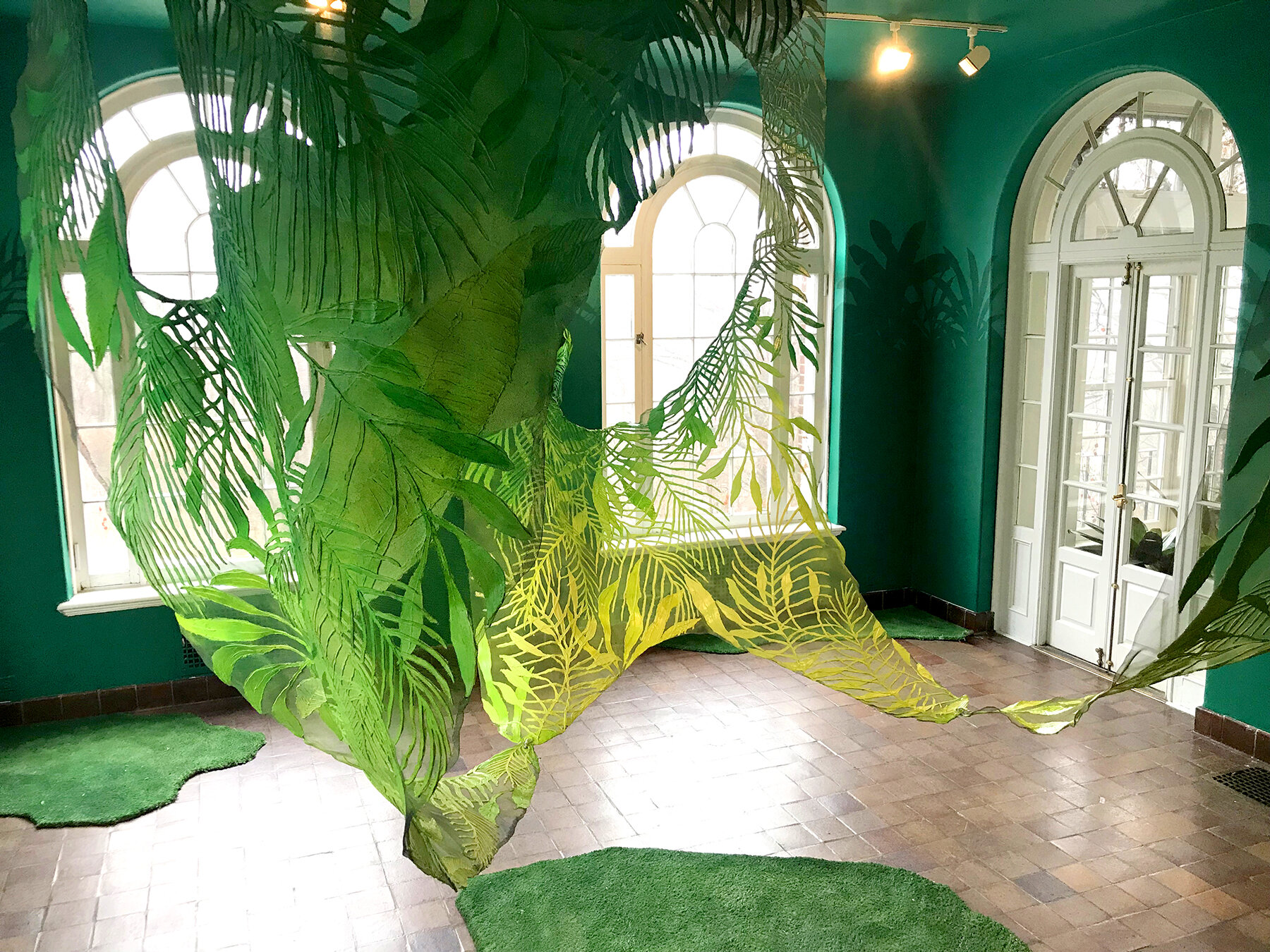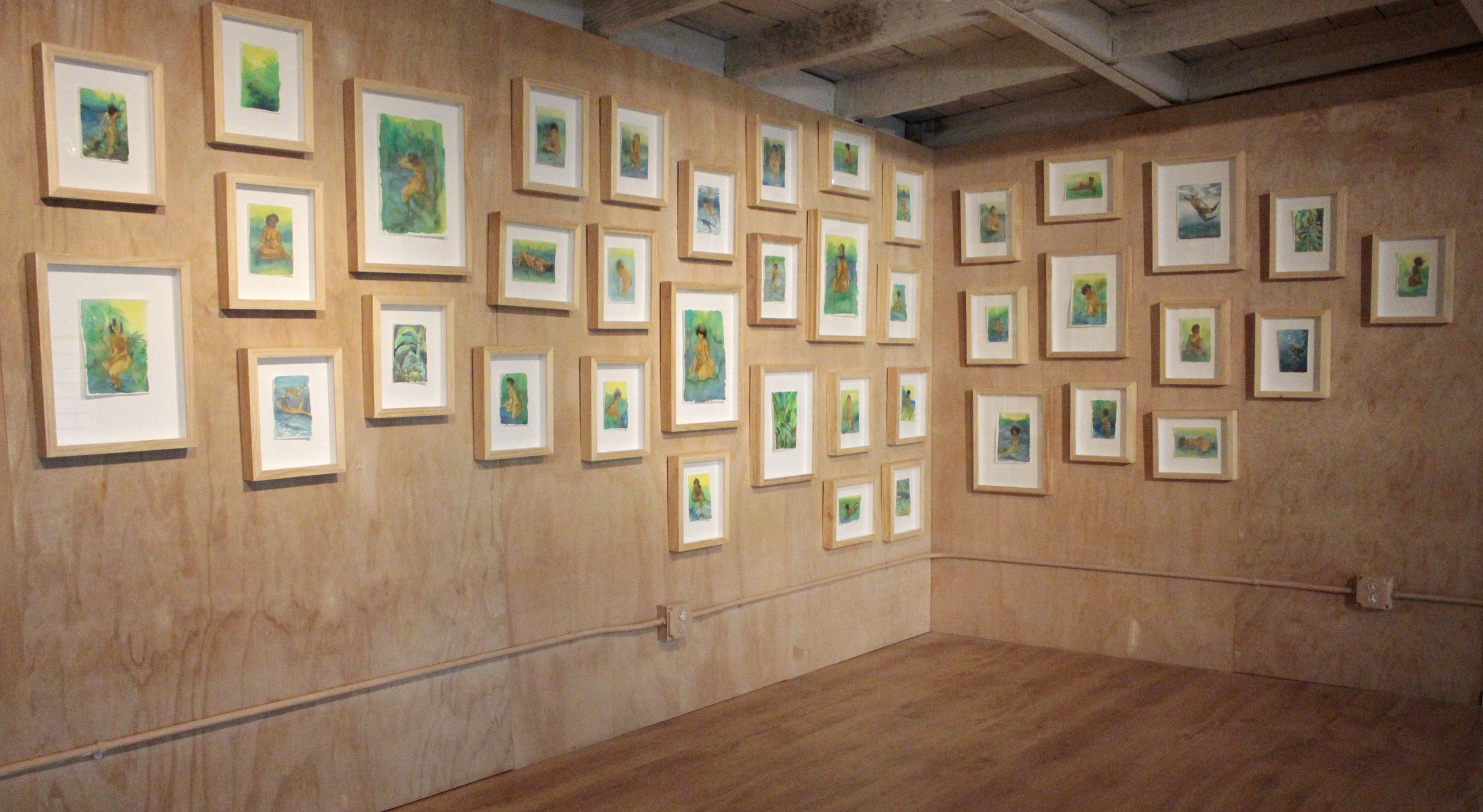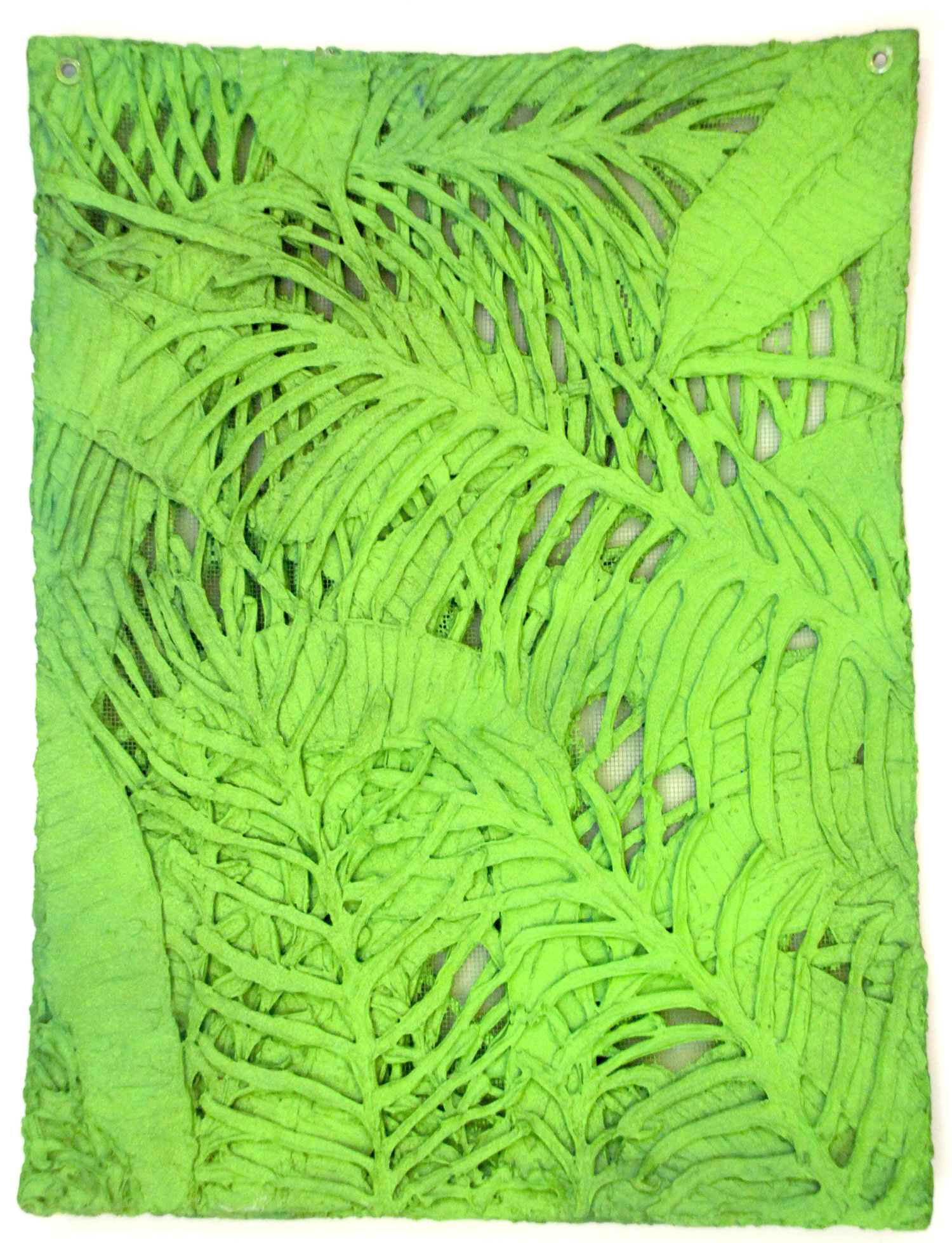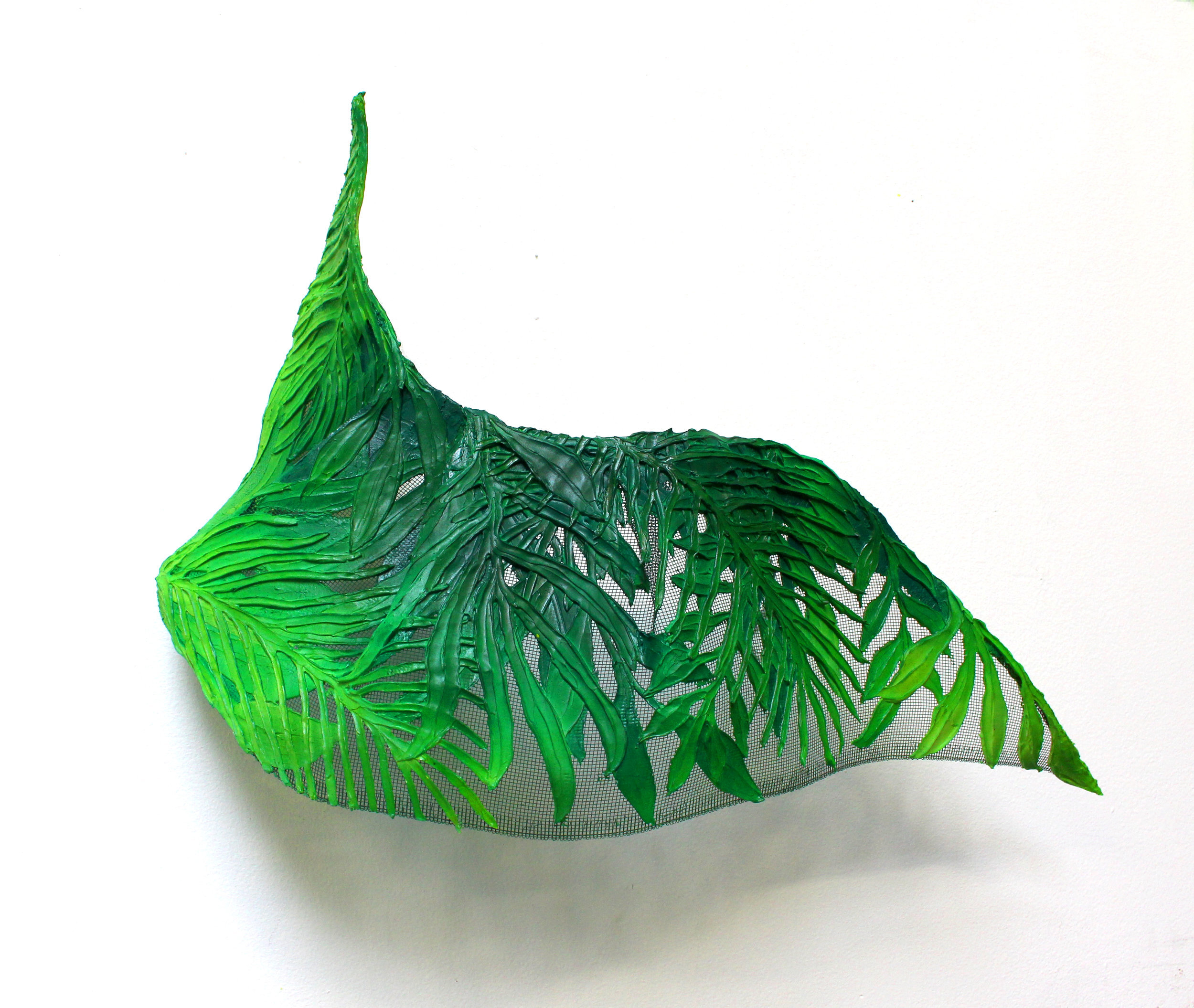Adrienne Elise Tarver
January 14, 2019
Throughout her work, Adrienne Elise Tarver has finessed both material and subject matter in ways that matter here and now. She maintains a lush green, tropical color palette and her most recent exhibition addresses the myth of the exotic brown-skinned woman from a tropical paradise-- the sort perpetuated by Paul Gaugin's Tahitian paintings. In a recent show of suspended mesh paintings, Tarver makes reference to the invisible 'veil' of otherness introduced by W.E.B. Du Bois in 'The Souls of Black Folk.' Her work is currently on view at The Children's Museum of Manhattan, and Camayuhs in Atlanta.
Untitled, Caulking and acrylic on wire mesh, 2016
"Origin: Fictions of Belonging," installation shot, caulking and acrylic on wire mesh, 2018
Origin: Fictions of Belonging is an exhibition about boundaries shown in a sunroom and composed largely of wire mesh screen and caulking. Screens are a very real and tactile barrier that reference the invisible veil of being black in America. It's an experience that produces, as Du Bois wrote for The Atlantic in 1897, "a peculiar sensation, this double-consciousness, this sense of always looking at one’s self through the eyes of others, of measuring one’s soul by the tape of a world that looks on in amused contempt and pity."
Untitled (Mirage 20), watercolor on paper, 2018
Mirage, Installation shot, 2018
Mirage is a group of small ("Tarot sized") watercolor paintings on paper showing ethereal, nondescript brown female forms in equally formless tropical backgrounds. The watercolor paint is thin and applied in washes, which heightens the incorporeal affect achieved by the blurred figures. The press release for the show states that "Like a mirage, these mystical bodies in the jungle are an optical illusion," making clear how imaginary, invented, the trope of the jungle queen has been all along.
Untitled (Lost), Caulking and acrylic on wire mesh, 2016
Armor 1 is a conical piece of mesh with luscious leafy green forms winding upwards. As a barrier it is meant to be both beautiful and obfuscate-- not merely exist as decoration or camouflage. This piece pushes the boundaries of painting as a medium in a way that feels fresh, carefully considered, and historically relevant.
Armor 1, Caulking and acrylic on wire mesh, 2018
Armor 2, Caulking and acrylic on wire mesh, 2018







